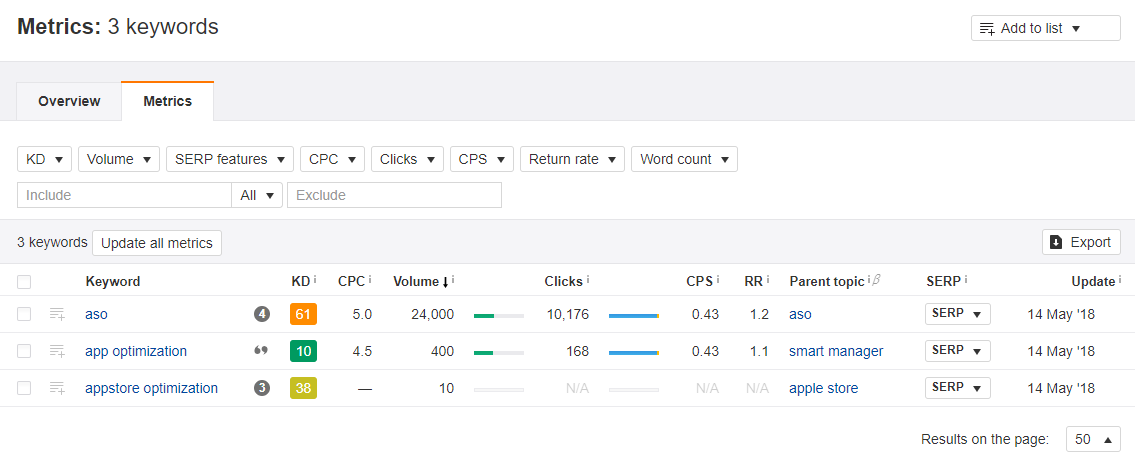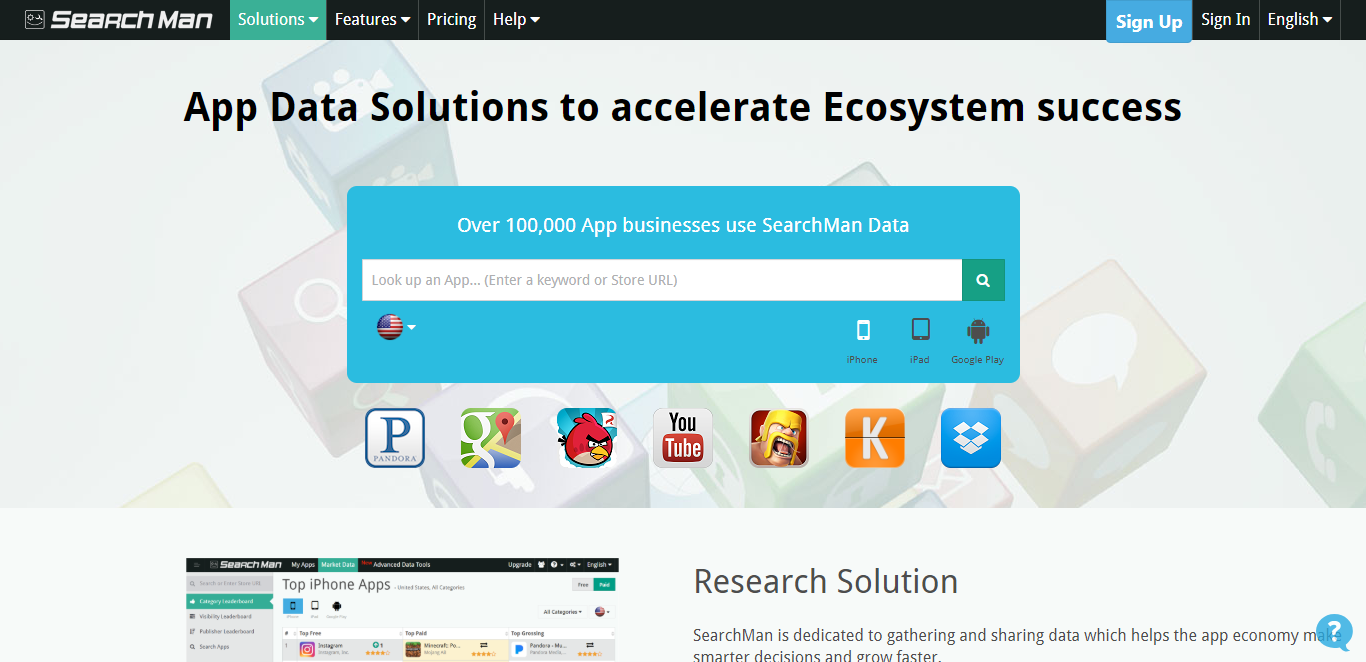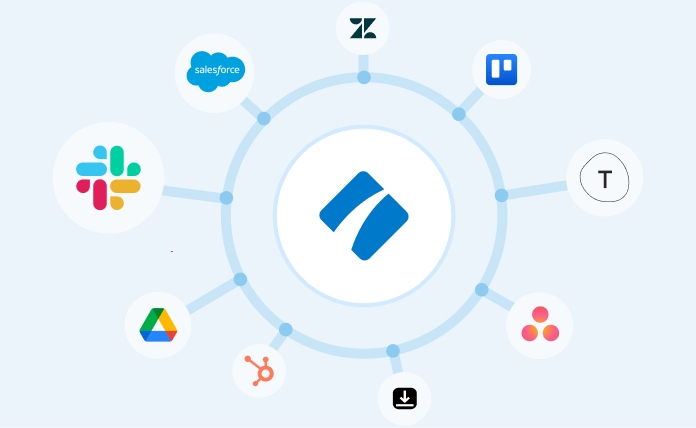 The app market is booming and revenue is soaring.
The app market is booming and revenue is soaring.
According to TechCrunch, citing a report from AppAnnie:
Global app downloads topped 175 billion and consumer spending exceeded $86 billion in 2017, thanks to growth in emerging markets including China, India, Brazil and Russia…
One of the benefits of targeting this huge and growing market is that the Appstore and PlayStore are largely closed ecosystems. You can promote your apps directly to potential users in the one marketplace they are using to access apps.
The AppAnnie report also notes that app usage is up, with the average user spending 3 hours a day within apps on their phone. This means your app, once downloaded, is competing with the other apps on a user’s phone rather than countless other websites across the web.
So how do we get these downloads?
According to another report co-authored by AppAnnie and Adjust, titled The Complete Guide to Mobile App Marketing: App Store Optimisation, two thirds of all app downloads are organic. This means the app has been found in the store as a result of a user’s search, rather than being directed there by adverts on Facebook, Google, or elsewhere.
To harness these downloads and drive consistent traffic to your app, you need to have a strategy for app store optimization: ASO.
In this Process Street article, we’ll look at:
- What is ASO?
- How to build a process for keyword optimization
- What are the best platforms to help you drive downloads?
What is ASO?

KissMetrics give us the following standard definition of ASO:
ASO is the process of optimizing mobile apps to rank higher in an app store’s search results. The higher your app ranks in an app store’s search results, the more visible it is to potential customers. That increased visibility tends to translate into more traffic to your app’s page in the app store.
The report from Adjust presents a similar overview:
As an app marketer, your job is to cut through that clutter and get in front of the right audiences. Increasing exposure for your app helps increase downloads, boost store rankings and ultimately drive revenue for your business. ASO is crucial to your app’s long-term exposure…
The crucial addition in the Adjust quote is the last sentence which focuses on long-term exposure.
If you run Facebook ads for a week directing people to your Appstore listing, then you will likely see a boost in downloads over that week. But when the adverts stop, so too does the traffic. Targeted adverts like these are ephemeral; they help you while you pay for them but then they disappear.
If you have a large budget and know that your customer’s lifetime value is higher than your cost of customer acquisition through Facebook ads then you could probably just keep buying Facebook ads.
However, this isn’t always true for every app – or an app might have limited short term capital, even if it expects to see positive returns in the long run.
ASO provides a way to rank in searches which is low cost and makes you discoverable to your target demographics. Once your app listing is well optimized and ranking for certain keywords, it will continue to rake in downloads without you having to pump more money into it. Building a strong ASO profile insures your app, allowing growth to continue even if other things go wrong.
There are three elements of ASO which need to be pulled out and looked at to understand how things fit together:
- Keywords determine who finds you
- Your listing needs to employ these keywords well
- Reviews and comments are appreciated by the algorithms
Keywords determine who finds you
 Anyone already familiar with search engine optimization (SEO) will already have an understanding of how keywords work and how you measure good ones.
Anyone already familiar with search engine optimization (SEO) will already have an understanding of how keywords work and how you measure good ones.
It is always going to be hard to rank for huge keywords like Education or Ecommerce. They’re broad categories with thousands of apps competing in their related area. Unless you are Amazon or Duolingo, you’re unlikely to fare well battling it out for these kinds of terms.
A good general approach might be to look first at niche keywords. These are keywords which are relatively untapped and have high relevance to your product; keywords you can compete for and are worth competing for.
Different platforms have different terms to describe metrics, but broadly speaking you want to evaluate your keywords on the basis of 3 factors:
- Volume: This refers to how often the keyword is searched for in the app store. It tells us how much traffic we should expect to see from this keyword. The more powerful the tool the more you can drill down into the specifics of download estimates.
- Difficulty: This is often determined by a mixture of how many other apps are currently competing for this keyword and how strong the ASO profiles of those apps are. It basically tells us how likely it is for us to rank and achieve visibility for this keyword.
- Relevancy: This is more of a qualitative measure, but there’s no point targeting a keyword which is only tangentially relevant to your product. The people searching that keyword should be looking for your product. A larger volume keyword vaguely related to your product may yield less downloads than a much smaller keyword that is tailored to your core service.
Your listing needs to employ these keywords well
 Your store listing on iOS and Android needs to leverage your keyword research and employ it effectively, otherwise your research was for naught.
Your store listing on iOS and Android needs to leverage your keyword research and employ it effectively, otherwise your research was for naught.
There are different approaches you can take to making sure the listing is optimized. The two factors to consider are:
- Ranking for the keywords
- Being appealing to potential downloaders
If you stuff keywords everywhere without making much sense, you might think you’re optimizing effectively to rank in search traffic. But if the Appstore or PlayStore notice you’re not driving downloads then they’ll gradually drop you down in the rankings anyway.
The incorporation of keywords needs to be natural.
The different stores consider keywords in the listing differently. In the PlayStore, the whole app description can help your app rank with the inclusion of your keywords, whereas the Appstore says that the wording of the description doesn’t affect the algorithm.

The PlayStore also contains an 90 character short description which is important to include keywords in, whereas the Appstore’s 170 character version is more about enticing the customer than optimizing for search results.
Within your iTunes Connect admin dashboard, when you submit your app or a new version of your app, you’ll see a section where you can add in the keywords you want to rank for. These won’t show in the store but will be used by the Appstore’s algorithm to determine what you’ll rank for. Depending on the length of your keywords, you might be able to fit between 6 and 10 keywords in this box.
The key difference between the two platforms is that your PlayStore listing needs to be more keyword oriented, whereas the Appstore wants you to be more customer focused; explaining your product better and describing the value you provide.
One interesting note is the question of how to title your app.
Facebook is called Facebook. Twitter is called Twitter. Spotify is called Spotify Music.
All pretty simple.
But why did Spotify append the word Music to their name? Well, the title of your app will be factored in when deciding how you rank for different keywords.
If we look at some other smaller music apps we can see how they have factored this in:
In order to compete with the big boys, smaller apps will often incorporate their primary target keyword – with the highest relevance to their product – into their title. This helps the app rank and informs potential customers what the app does at a glance.
Reviews and comments are appreciated by the algorithms

The Appstore is somewhat guarded about its algorithm and how it is structured.
However, we know a little more about how the Playstore approaches its ranking systems. One key thing is the importance of engagement.
An example of this commitment to engagement is reported by TechCrunch:
Google is making a significant change to how its app store, Google Play, will work in terms of making the best games more easily discoverable by end users. At the Game Developers Conference, the company announced that it recently tuned its app store algorithms to take into account user engagement, and not just downloads, in order to better reward quality titles, as opposed to those that are just being installed in large numbers.
Given that there is a whole market out there for app developers and marketers to game Google’s algorithms through driving fake downloads, the PlayStore has increased the importance of certain other metrics in evaluating how popular an app is.
 One method is to utilize the levels of reviews and comments more in determining what should rank. Both the Appstore and the PlayStore are constantly on the look out for fake reviews and strange patterns of behavior, so this effort in clearing out bad or paid reviewers can allow for real reviews to be used to inform algorithms.
One method is to utilize the levels of reviews and comments more in determining what should rank. Both the Appstore and the PlayStore are constantly on the look out for fake reviews and strange patterns of behavior, so this effort in clearing out bad or paid reviewers can allow for real reviews to be used to inform algorithms.
As such, it is vitally important that your app gets plenty of positive reviews and comments.
There are two legitimate ways you can approach this:
- Ask for reviews: This could be anything from asking friends and family for reviews, to running a promotion in your marketing where you reward people for leaving reviews. From the smallest scale to the largest. You could also pay people to leave reviews, but I’m not going to advocate for that as it’s against T&Cs.
- Build reviews into your app: This is the same but subtly different. As part of people’s experience of your app, you could prompt them to leave a review. From something as simple as a push notification asking them to review the app 1 week after download, to earning ‘points’ in the app for leaving a review. The nature of your app will determine how you could approach this.
The big point is that if you want either app store to think you are a quality app, then having your users tell the app stores you are quality is going to help.
How to build a process for keyword optimization
As we’ve said time and time again, building strong business processes and then effectively implementing processes is the surest way to introduce consistency into your business and to improve success through optimizing and automating over time.
This is our big picture outlook at Process Street.
As such, this article would be pointless without giving you a process you can follow.
If you want to dive in to a video to show you a breakdown of how to do elements of this process, check out this one below by Steve from App Masters:
Build a big list of keywords

First off, you want to build a massive list of potential keywords which you might hope to rank for.
The bigger the list, the better. Along with creating this big long list, you can throw keywords into other online tools which can help you develop common variations on those keywords. A program like Keyword Tool can help you expand on the list you’ve pulled together.
As you create this list, think about all the purposes your app has and all the problems it can solve.
I have a language learning app, so the most obvious keywords for me are:
- Learn languages
- Language exchange
- Learn English
- Etc.
Thing is, these will probably all be pointless keywords to aim for as they’ll be so difficult to rank for. The broader my net, the more likely I’ll stumble over niche keywords which I can do well in.
Maybe I’ll want to go for:
- Learn Spanish
- Learn French
- Learn German
Or start translating those keywords into different languages to get variations:
- Aprender ingles
- Apprendre l’allemand
- Almanca öğrenmek
The more variations you can construct to include in your list, the higher the chance that you’ll find untapped keywords to help drive your product’s downloads.
Research what keywords your competitors rank for

To continue this list building process, it’s useful to perform keyword research on your competitors.
Established competitors may be targeting keywords which you might struggle to reach if you’re new on the scene, but other similarly sized competitors might be targeting keywords or niches which you hadn’t considered.
For the purposes of the process, let’s say to perform competitor keyword research on 5 competitors and save that information. What you can do from here is to track the performance of your competitors over time while checking to see what keyword changes they make. This can give you an idea of how they’re growing and whether or not you can steal some of their effective strategies.
You can perform competitor research via the platforms listed in this article – however, you may have to pay in order to access these services. A free trial should give you enough access to play around with keyword competitor analysis and to help you understand how you can make this approach effective for your business.
Run your list through 1 or more platforms

The different platforms we’ll look at in this article generally give pretty similar results.
However, they are subtly different and the results can show different things. If you can afford to, it may be worth running keywords through more than one of the available platforms.
You can then compile this data to see patterns or trends across the results for each keyword. This can help you identify anomalies or exaggerated results, leading you to make better decisions.
One added tip is to not forget about the international nature of the Appstore and PlayStore. If you only search for keyword scores in America then you’re not optimized for other markets. How you approach international markets is up to you, but it’s easy to build specialized listings in the app stores for each country so it’s worth making the effort to optimize those listings too.
Run your keywords through each platform for different countries and you might find success in places you didn’t expect, literally.
Compile the data in a table
Once you have run all this research, pull everything into a nicely organized table.
You could use Google Sheets, Excel, or a platform like Airtable. Compiling it is the first step to being able to properly analyze it.
I created a separate sheet for each country’s store listing and entered the keyword results from 3 different platforms into each sheet. Once formatted correctly, you can sort your table by volume or difficulty from whichever platform you want to choose from.
This provides you with a massive database of keywords for different locations which you can analyze as you wish.
Select the 5/6 keywords to specifically target

Now you can select the keywords you want to target. I’ve stated 5/6 keywords in the subheader for a simple reason: on the Appstore it prompts you to enter the keywords you want to target into a box and there’s only space for about 6 – 100 characters to be precise, see above image!
In reality, you might want to select even more keywords per listing with some keywords being super easy ones to target straight away and others being a little tougher ones which you want to scale up to over time.
Plus, if you’re selecting 10 keywords per location listing and you’re hitting 10 locations, then now you’re targeting 100 keywords.
You can see why we advocated building a big list to start with.
Construct your AppStore descriptions
This is simple enough. Utilize the sections the algorithm looks for keywords in. Put your most valuable keywords in here and ride them the organic downloads.
For your app description in the AppStore though, you don’t need to worry about packing it with keywords. Write persuasively with sales and marketing on the mind. You want to tell your audience about your value and how you deliver that – about what you can do for them.
Maybe check out the descriptions of other similar apps and assess what they each do well. Pick up the positive habits of other successful apps.
Set your keywords for monitoring over time

Within the different platforms available to help you monitor and measure your optimization efforts, you’ll find the option of tracking certain keywords over time.
You can track your own performance for those keywords while also tracking the keywords more broadly; who else is ranking for them, what new apps are targeting them?
Tracking over time can give you solid longitudinal data and help you separate out the keywords you’re doing a good job with from those your app is struggling with. What looks like a good keyword for you might not be as well suited as you thought; people searching that keyword might be looking for something different to what you’re offering.
Keeping this in mind is important to make sure you’re optimizing your choice of keywords through your own performance, rather than simply relying on the abstracted general value of a keyword.
Integrate your reporting into your workflow

This step depends wholly on your workflow.
Whatever your workflow, it’s useful to find ways your ASO efforts can be integrated into it in order to be on top of what your doing.
If you work out of your email inbox then receiving email updates and notifications of keyword changes could work for you. I prefer not to clutter up my email, and instead choose to clutter up my Slack.
There are a host of tools you can use to shift your reporting straight into Slack. Three tools we haven’t yet mentioned in this article which are worth consideration are:
With these kinds of tools you can have daily or weekly summaries posted into your relevant Slack channel for yourself and your team to keep track of ASO without leaving your regular workspace.
If you have any recommendations of other tools you’ve used to help integrate ASO into your daily workflow then just shoot them at me in the comments. There are loads of great tools on the market!
Review keyword performance on a monthly basis and tweak when necessary
At Process Street, we’re constantly reinforcing the importance of having documented processes.
We have a rule within the company to build a process for any task we’re likely to do more than twice.
This final stage in the process is to build your monthly review process. You could include steps like checking the volume and difficulty of each keyword you’re tracking to see if it has changed. You could record which keywords you’re performing well in and which aren’t going to plan. You could add a step to record which keywords you’re removing from your target list and which you’re adding.
However you choose to create it, if you utilize a documented process then you’ll be able to optimize that process over time and have consistent data to analyze when you look back in the future.
If you wanted to use Process Street for this then you could create the template and have it assigned to yourself or the relevant person so that it runs as a checklist automatically at the beginning or end of each month.
What are the best platforms to help you drive downloads?
You’ll find a host of platforms online which can help you optimize your app’s performance in the stores, but we’re going to cover 5 in particular.
If you have any others you’ve used and want to recommend to others, let me know about them – and why you like them – in the comments below!
AppTweak

AppTweak is a dedicated ASO platform which gives you all the necessary data to decide what keywords to go after and helps you understand how to go after them.
If you’ve used an SEO platform like Ahrefs, which we use at Process Street, then you’ll find AppTweak to be intuitive as it structures its information in similar ways.
AppTweak gives you recommendations of which keywords to aim for after running your numbers, and interestingly for us also provides a series of in-platform checklists to improve your own listing. You can connect your app listing with the platform and it reviews your setup. From there it will give you an actionable series of recommendations for improving your listing.
The starter package gives you everything you need for a basic keyword analysis and comes in at €59 a month. The recommended package with download and revenue estimates is priced at €299 per month.
AppAnnie

AppAnnie is one of the heavyweights of the ASO game.
You’ll notice how the in-depth industry reports mentioned in the introduction of this article are both associated with AppAnnie. Its reputation is high and its scope of functionality and service provision is not to be scoffed at.
I use AppAnnie for general reporting and the basic platform is a very useful tool for assessing your regular app metrics.
AppAnnie’s ASO tools are considered to be incredibly useful and accurate with some of the best media content for tackling ASO found in its Insights blog.
The free version of AppAnnie can give you information about your app’s performance as well as keyword rankings, rank tracking, and elements of competitor insight. The paid version includes detailed ASO insights along with download and revenue estimations which can be broken down by country and delivered alongside insights about market size, all from within your dashboard.
The AppAnnie premium version is on the expensive side of ASO services. You’ll have to contact the sales team to understand what AppAnnie can do for you for what price.
Mobile Action

One thing I really like about Mobile Action is how wide ranging its free trial is.
Mobile Action allows you to gather volume and competition scores (think difficulty) across different countries and lets you track keywords over time, all without paying them a penny. It’s a limited service in comparison to what you can get when you pay them, but having the time to get comfortable with the platform before purchase has definitely pulled me in to wanting to add Mobile Action to my stack.
Mobile Action is easy to navigate and after a quick play around you’ll find yourself stumbling across valuable data helping you understand not just which keywords your competitors rank for, but which they receive most downloads from.
An all purpose ASO tool which is a joy to use, the basic package starts at $69 per month with premium priced at $499.
Sensor Tower

Sensor Tower provides many of the same services as the other apps listed.
You can analyse keywords and understand both their volume and difficulty, as per. The platform also offers download and revenue estimates along with info about advertisers and the performance of monetization efforts.
Sensor Tower presents itself as being more geared toward understanding your app as a business, rather than presenting themselves as a tool to help simply boost growth. It boasts about being used by financial analysts and VCs to identify emerging trends in the market; from fast growing apps to the changing nature of different global market segments.
Sensor Tower also boasts usage data on top of raw downloads. For its small business offerings pricing begins at $79 per month and tops out at $400 per month. Like the other platforms, Sensor Tower has a range of enterprise services with custom pricing plans.
SearchMan

SearchMan is part of the AppGrooves family and lets you research different keywords, track them over time, and understand how to leverage them for maximum payoff.
Many of the other services provide API access, as SearchMan do. Through API access to the data you can have your technical team run complex queries and dig deeper into the numbers.
One positive of SearchMan, with this in mind, which I want to pull out is the Spreadsheet Solution. This feature lets you run custom queries in a user friendly way to give a greater breakdown of the data. For non-technical folks, this provides a good way to investigate further into the figures available.
SearchMan pricing comes in lower than the others, albeit for a slightly more limited service. The paid section of the ‘Freemium’ model is priced at $25 per month and gives you access to a range of ASO tools on top of the free to access trends data. The Spreadsheet Solution is $99 per month with API access priced at $250. Enterprise plans are also available.
Drive Your App Growth With Intelligent ASO Strategies
Regardless of which platform (or platforms) you choose to sign up for and leverage in your pursuit of growth, you won’t make the most of their services unless you’re fitting them into an effective system.
Implementing processes throughout your ASO journey will mean you perform at your best again and again, and you’ll be ready to hand of that work to your new employee when the hard work pays off and your app skyrockets.
Let us know of any other tips, tricks, or platforms you recommend to help drive growth through ASO in the comments below!







 Workflows
Workflows Forms
Forms Data Sets
Data Sets Pages
Pages Process AI
Process AI Automations
Automations Analytics
Analytics Apps
Apps Integrations
Integrations
 Property management
Property management
 Human resources
Human resources
 Customer management
Customer management
 Information technology
Information technology



Adam Henshall
I manage the content for Process Street and dabble in other projects inc language exchange app Idyoma on the side. Living in Sevilla in the south of Spain, my current hobby is learning Spanish! @adam_h_h on Twitter. Subscribe to my email newsletter here on Substack: Trust The Process. Or come join the conversation on Reddit at r/ProcessManagement.